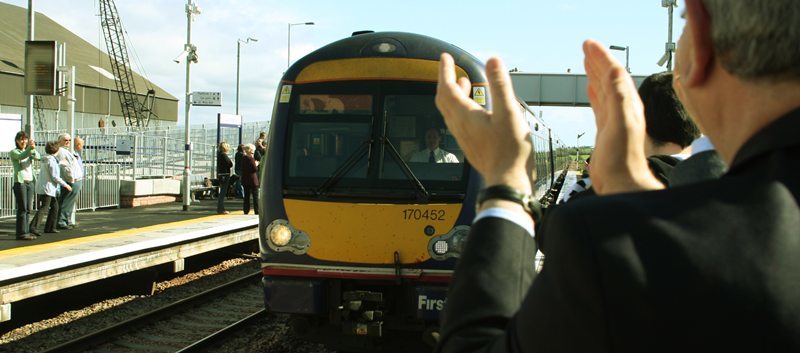The number of travellers using a Mearns train station are more than double what was predicted and the campaigners who succeeded in reopening the platform are now calling for more trains to stop there.
ScotRail expected 36,000 passengers to use Laurencekirk in the first 12 months after it returned to use following a 42-year closure.
However figures show nearly twice as many 64,000 have used it during that period.
Campaigners said the station was making the Mearns burgh a more attractive place to live, and the high number of rail users strengthened the case for more trains to stop and better bus connections.
Solicitor Norman Banski, secretary of the Villages In Control group which led the campaign to reopen the station, said, “These numbers of railway passengers are beyond even our wildest expectations. They absolutely vindicate our campaign to get the station reopened.
“We are absolutely delighted. There is anecdotal evidence that the actual number of passengers may even be higher than the official figure.”
The station closed in 1967 but reopened after being transformed through a £3.5m investment with Scottish Government funding supported by Aberdeenshire Council and a railway heritage trust grant.
Eleven northbound and 10 southbound services now pass through every day from Monday to Saturday and three trains go each way on a Sunday.
“We will now be pushing for more trains to stop here,” said Mr Banski, a frequent user of the station, taking the train from his north-east home to his office in Laurencekirk.
“There are a couple of periods, when, if we had trains stopping, I think we could have even more people travelling on the railway.
“A train between 7am and 9am could help teachers and pupils travelling to school, and there’s a gap in the timetable between lunchtime and 3pm that needs filling.”
He added that Villages In Control also hope for better co-ordination between train and bus services.
Mr Banski said, “We could have a stop in the station car park for the service buses. That way we could have a proper transport hub for the area.”
ScotRail managing director Steve Montgomery said, “We are delighted to have delivered 64,000 passenger journeys in Laurencekirk’s first year.
“It is heartening to know that we are developing rail services where they are needed most.”
Chairman of the north-east transport partnership Nestrans, Councillor Kevin Stewart, said they were keen to develop further rail schemes to build on the success at Laurencekirk.
